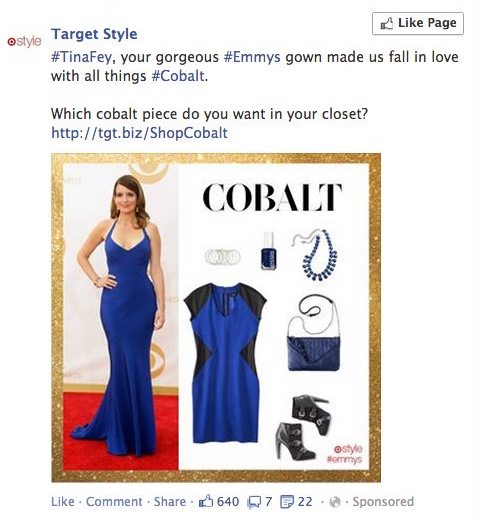

Why moment marketing matters

When done right, moment marketing stands out in your audiences’ mind increasing your brand exposure.
Over the past weeks, you may have noticed your social media feed filled with acquaintances and brands supporting and congratulating athletes who participated in the Tokyo Olympics? Not one bit surprising — this is what moment marketing looks like.
A look at moment marketing
Moment marketing is a strategy that takes advantage of ongoing events and builds marketing collateral or other forms of brand communication around it. By doing so, brands insert themselves into the public discourse in an attempt to maintain their brand relevance.
When Indonesian badminton players Greysia Polii and Apriani Rahayu won the gold medal for the women’s doubles, many Indonesian brands congratulated them on social media — highlighting their achievement of becoming Indonesia’s first women’s doubles champion in 29 years. Grab went a step further: it rewarded them with $70,000 and free orders for a year as a token of appreciation, but their marketing intentions were not lost on us.
The same thing happened when Indian athlete Saikhom Mirabai Chanu bagged the country’s first ever silver medal in weightlifting during the Tokyo Olympics. Brands added their tributes on social media, but notice how they all managed to insert themselves into the moment.
While the impact of moment marketing is more akin to soft power, studies have been conducted to evaluate its true effectiveness. As it turns out, there is a positive correlation between moment marketing and consumers’ buying behaviour. One particular study done on Fast Moving Consumer Goods (FMCG) has discovered that 71% of consumers’ buying behavior is influenced and instigated by moment marketing.
Here are a few tips to help you begin:
1. Follow the trends and seize it
It’s 2021 — smartphones and the 24/7 news cycle has become part of our daily lives. Unlike pre-planned campaigns, moment marketing gives you the immediacy to interact with your audience, discussing what is happening in real-time.
By incorporating what is trending into your marketing materials, you do not have to spend hours connecting with your audience because you’ll already be a part of those daily conversations.
Not only specific to big events such as the Olympics or the World Cup, moment marketing is also about leveraging what is trendy at any given time.
One example is when a blackout incident occurred during Beyonce’s 2013 Super Bowl performance. Oreo used this to come up with the “You Can Still Dunk In The Dark” campaign, achieving virality with 13.8K retweets in less than an hour. Pretty impressive considering how their usual tweets tend to get less than a hundred retweets in total.
2. Show how your brand relates to the trending topic
Yearly events such as awards shows and ceremonies often capture a moment in time and create buzz. One aspect that can be beneficial is the red carpet segment when celebrities show off their gowns and accessories to the world’s media.
However, not all viewers have the luxury to purchase designer gowns and accessories. If you are a retail owner, this is your chance to show where your brand comes in: you can offer more affordable alternatives that lead customers to your site.
One instance is when Target highlighted Tina Fey’s 2013 Emmys cobalt gown while showcasing their cobalt-coloured products, including dresses, earrings, and shoes.
3. Use humour
We have made a case for using humour in your marketing strategy, and yes, it applies to moment marketing as well! Making things funny helps your brand to be more memorable and stand out from your competitors. One way to make humorous content is through creating memes.
When Rihanna attended the 2015 Met Gala in a yellow canary dress with a long terrain, viral memes were created to poke fun at how her outfit resembled egg rolls or pizzas. Domino’s Pizza took this chance to promote their Pepperoni Passion Pizza and rode the viral moment (and Rihanna’s star power) effectively.
Is moment marketing ethical?
Since you do not need to create marketing collateral from scratch, but rather capitalise on an ongoing moment to launch your marketing initiative, moment marketing often raises questions of ethics, consent, and right of use. There is another name for moment marketing, it’s called ‘news-jacking’ as in hijacking a news story.
Back to the Olympics example: when India’s PV Sindhu became the first Indian woman to win two Olympic medals in Badminton, several brands ran ads on their social media congratulating her. They featured her winning moment and name, along with their logo and branding, riding on her sudden surge in popularity and making it seem as if she was endorsing them.
However, in reality, she is not associated with any of these brands, nor is she compensated for having her image used. In fact, she will reportedly sue each brand of up to Rs 5 crore (approximately S$914,000) for using her name and picture without her consent.
Indeed moment marketing can give brands a quick exposure boost, but brands should also be aware of any possible legal repercussions to avoid damaging reputations.
Be prepared at all times
As moment marketing is happening in real-time, be on the lookout for high-profile events. Assign your marketing and social media team to keep up with what people are talking about on social media regarding the event.
Capitalise on what is happening and incorporate it into your marketing strategy. The marketing team in Oreo could not have predicted that a power outage would happen during Beyoncé’s performance, but they knew the Super Bowl attracts millions of viewers each year, so they had a 15-person social media team on standby to react online to anything that happened during the game.
Moment marketing is a necessity to connect and keep up with your audience in today’s interconnected world. Doing it right can result in higher engagement and brand awareness that is beneficial in the short or long run.
Want to have the right marketing strategy and seize the moment properly? Reach out to our CEO Simon Kearney at [email protected]
Read more from Click2View:
- Try these animation styles next.
- Forget celebrities, it’s time for micro-influencers to shine.
- Why your website needs to have case studies
Sign up to our newsletter for a weekly update on the latest content marketing news. Don’t forget to subscribe to our YouTube channel too!
Click2View is Southeast Asia’s premiere full-service independent B2B content marketing agency servicing clients like Microsoft, Google, Visa, Prudential, and the Lee Kuan Yew School of Public Policy.









